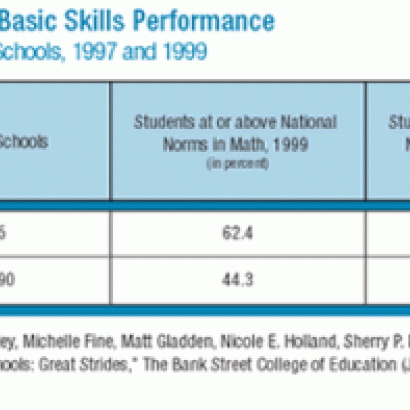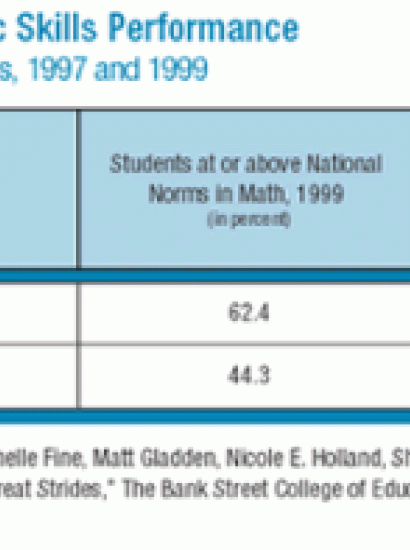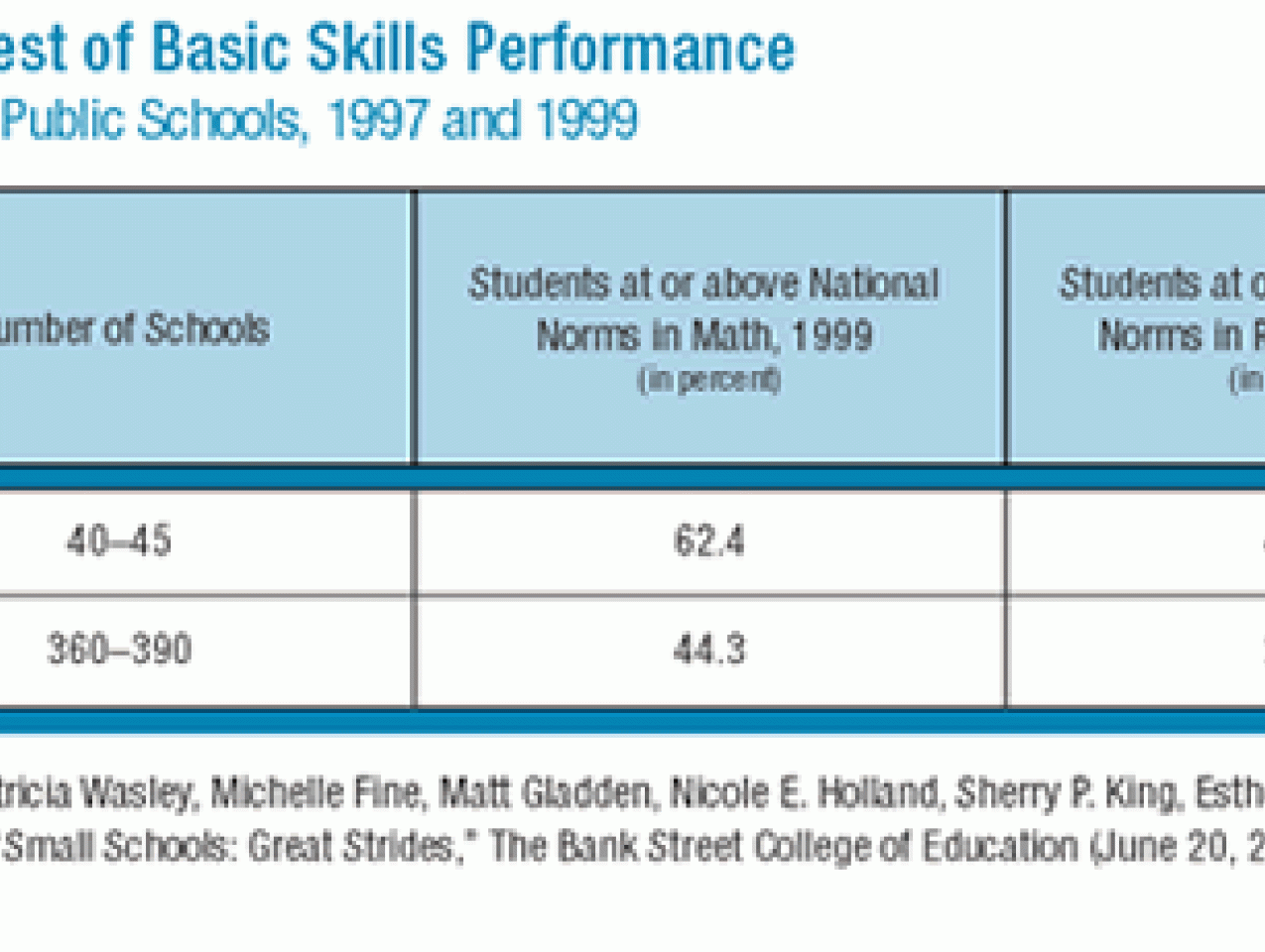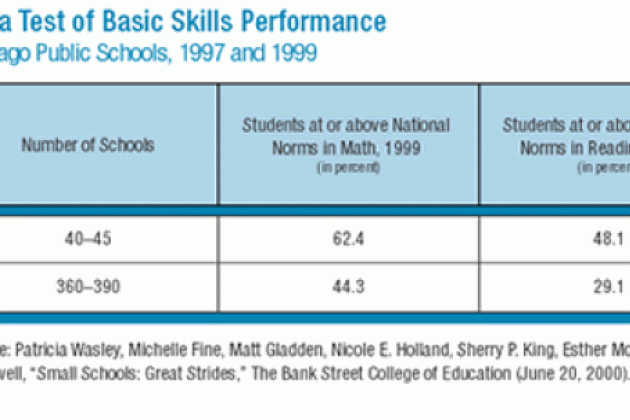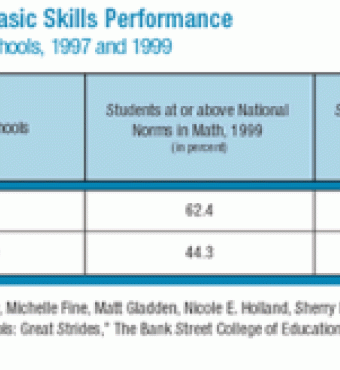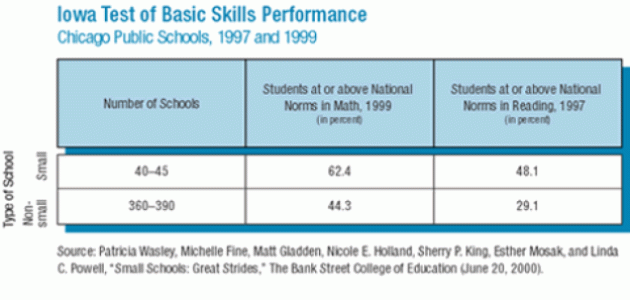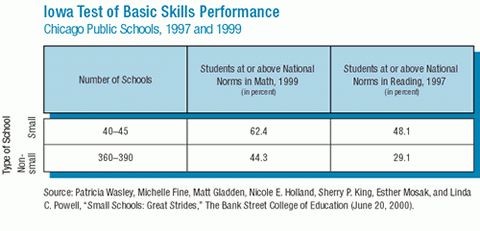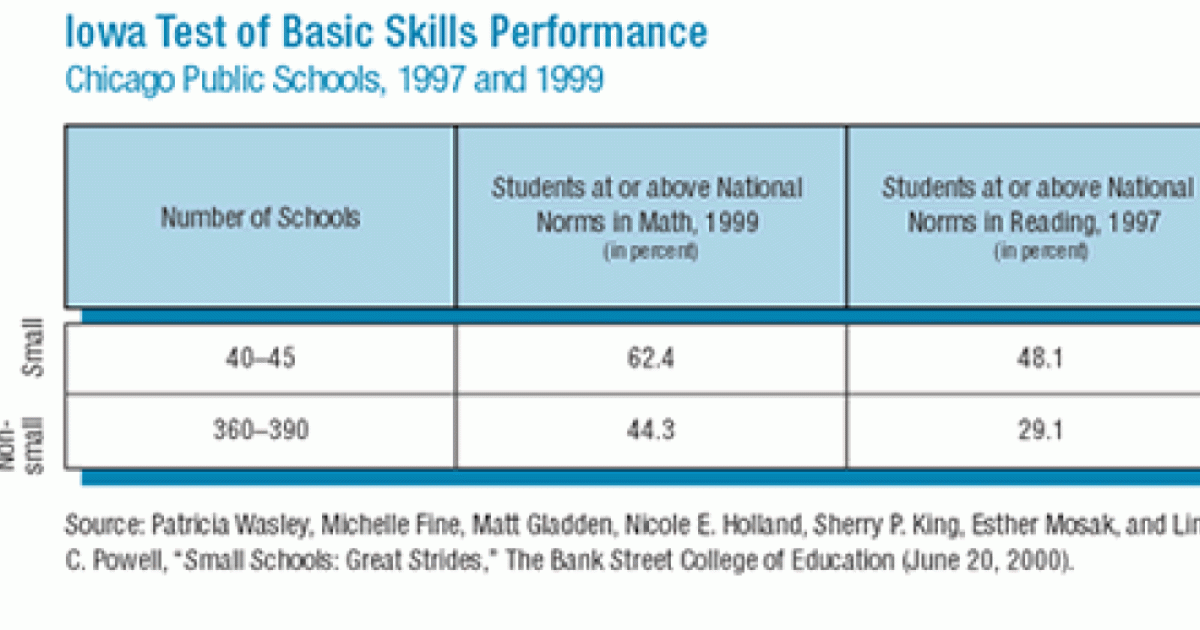- Education
- K-12
- State & Local
- California
With America’s renewed interest in the quality of education following the launch of the Soviets’ Sputnik in 1957, new ideas for educational improvement proliferated. Unfortunately, few were effective. One little-noticed “improvement” was a more “scientific” approach to education, including the consolidation of school systems. In the minds of “experts,” consolidation meant economies of scale: more efficiency and more effectiveness. Franklin Keller’s 1955 book, The Comprehensive High School, recommended consolidation. James Conant’s 1959 book, The American High School, stated that the small high school was the number-one problem in education and that its elimination should be a top priority. Entitlement programs and desegregation compliance in the 1960s further contributed to the consolidation movement.
Research today, however, contradicts the education experts of a few decades earlier. Many experts presumed, for example, that large schools—high schools in particular—offered a more diverse curriculum and more opportunities at a lower cost; mounting evidence indicates that neither of these assertions is true. In fact, comprehensive research shows that small schools are superior to large schools on most measures and equal to them on the rest. A comprehensive review of 103 studies revealed the following: The academic achievement of students in small schools is at least equal to, and often superior to, that of large schools. A recent study documenting Chicago’s small-school reform implementation, which included approximately 150 schools, showed improved standardized test scores or average test scores holding steady despite more students taking the test. No available research suggests that large schools are superior to small schools in their achievement effects (see accompanying table).
Also evident is marked improvement in achievement among ethnic minority students and students of low socioeconomic status (SES). A July 1997 study reported that “disadvantaged students in small schools significantly outperformed those in large ones on standardized basic skills tests.” A study by the Consortium on Chicago School Research found that, “for both reading and math, small schools produce greater achievement gains than larger schools holding demographic and teacher characteristics constant.” A study in 2000 showed that small schools helped close the achievement gaps between less-affluent students and their wealthier counterparts.
Student attitudes toward school in general and particular school subjects are more positive in small schools. Furthermore, research indicates that the attitudes of low-SES and minority students benefit greatly from attending smaller schools.
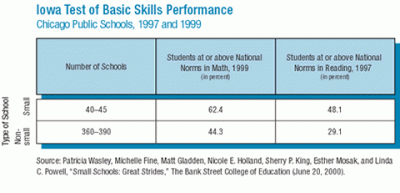
Cost-effectiveness is also possible in small schools. When per pupil costs are calculated on the number of students who actually graduate from school, rather than on the number who just attend, the so-called savings of big schools largely disappear. If a small school attempts to maintain the large-school infrastructure, however, it will probably not be cost-effective.
Behavior problems are fewer in small schools. Research shows that, in every instance, small schools have lower incidences of negative social behavior—everything from truancy and classroom disruption to vandalism, aggressive behavior, theft, substance abuse, and gang participation—than do larger schools. For example, according to the U.S. Department of Education, more than half of small-school principals report either no discipline or minor discipline problems, compared to only 14 percent of big-school principals. Schools of 1,000 or more students experience 9 times more violent crime, 3 times more vandalism, and 11 times more weapons incidents, compared to those with fewer than 300 students.
In small schools, participation in extracurricular activities is higher and more varied, as is the satisfaction from such participation. This holds true regardless of setting and is most applicable to minority and low-SES students. Furthermore, research has identified an important relationship between extracurricular participation and other desirable outcomes, such as positive attitudes and social behavior.
Attendance patterns are better in small schools. Not only do students have better attendance records but, when secondary students switch from larger to smaller schools, their attendance generally improves. For example, in the study documenting Chicago’s small-school reform, the average number of days missed in core courses per semester (controlling for eighth-grade achievement and demographics) was 14 for “non-small” schools and from 8 to 10 days missed in small schools.
Nine out of ten reports reviewed confirmed lower dropout rates for small schools, and students from small schools are more likely to go to college. In Nebraska, 73 percent of students in districts with fewer than 70 high school students enrolled in a postsecondary institution, compared to 64 percent of those in districts of 600 to 999 high school students. These findings hold even when other variables, such as student attributes or staff characteristics, are taken into account.
Among students and between students and teachers, relationships were perceived as better in small schools. In a recent Public Agenda poll of high school parents and teachers, 66 percent of the parents and 79 percent of the teachers favored smaller high schools. Although no reliable relationship exists between school size and curriculum quality, according to some researchers, the alleged richer curriculum that larger schools offer tends to be made up of additional introductory courses in noncore areas, not higher-level courses.
Proposals for small schools have emerged all over the United States. In New York, Chicago, and Philadelphia more than 300 downsized public schools have opened over the past 15 years. The popularity of smaller schools as an educational improvement appears to be on the rise; however, consolidation and its effects are still apparent. Approximately 70 percent of American high school students attend schools enrolling more than 1,000 or more students, and nearly 50 percent attend schools enrolling more than 1,500. In the 1937–38 school year, the average student body of a secondary public school was approximately 200; in the 1997–98 school year, the average was 779. High schools with enrollments of 2,000 and 3,000 students are not uncommon; New York City has schools with enrollments of more than 5,000. The average size of public high schools varies extensively depending on the state; for example, Florida’s secondary public school average is 1,662; South Dakota’s is 173.
Although in the short run there may be dollar savings resulting from consolidation, in the long run noteworthy and long-standing cost savings result when schools are smaller, including higher achievement, less violence, fewer discipline problems, and higher attendance and graduation rates. After examining both curriculum quality and cost-effectiveness, researcher Kathleen Cotton stated, “The perceived limitations in the program that small high schools can deliver and their presumed high cost regularly have been cited as justifications for our steady march toward giantism. The research convincingly stamps both of these views as misconceptions.” Smaller schools produce positive results. America should take notice of the impact smaller schools are making.








